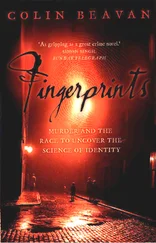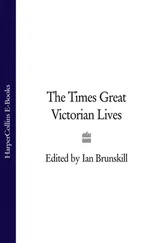On the morning of Thursday, 27 July, Victoria agreed to spare the young woman. The governor of Fisherton gaol hurried to Constance's cell to give her the news, which she received with her customary calm: 'She did not show the slightest emotion.'
That week, Joseph Stapleton wrote a letter to The Time , inviting the newspaper's readers to contribute to a fund he had set up for Elizabeth Gough at the North Wilts Bank, Trowbridge. For 'five long years', he said, she 'has been shut out from profitable domestic employment' because of the suspicions that attached to her at Road. He attested to 'the uniform modesty and purity of her character, her fidelity to her master and his family, her unwavering courage and simple truthfulness in her time of trial and peril'. Stapleton also drew attention to the plight of William Kent. 'This young man, now nearly 21 years of age, is a good son, a devoted brother, amiable and talented beyond the ordinary endowment of such qualities; but the thick dark cloud of this enduring family sorrow rests on him and bars his entrance into life. Will no one bring William Kent under the notice of the Government? Would the Government resist an appeal on his behalf for employment suitable to his education and habits?'
Because Constance pleaded guilty, Wagner's refusal to disclose all that she had told him was never challenged in court (in fact, Willes had decided that he would defend Wagner's right to silence on this issue - he told Coleridge afterwards that he had satisfied himself that there was 'a legal privilege in a priest to withhold what had passed in confession'). The clergyman remained loyal to Constance. He and Katharine Gream paid her regular visits in prison.
In August, an effigy of Constance Kent was modelled by the waxworkers of Madame Tussaud's to put on display in the museum's Chamber of Horrors, alongside newly made figures of two other murderers - Dr Pritchard, the poisoner, and John Wilkes Booth. Wilkes Booth had assassinated Abraham Lincoln in the week that Constance made her confession to Wagner; on the day that she was imprisoned at Devizes he was hunted down and shot dead in a barn in Virginia.*
On 4 August the Wiltshire magistrates wrote to Sir Richard Mayne to suggest that Whicher and Williamson be given the PS100 reward that the government had offered in 1860 for evidence that led to the conviction of the Road Hill murderer. This would serve, they wrote, as 'a slight acknowledgement of the great skill and sagacity displayed by them in their difficult task'. The suggestion was ignored.
Just before she left Brighton for Bow Street magistrates' court in April, Constance had written a letter to Sir John Eardley Wilmot, the baronet who in 1860 had taken such an interest in helping the Kents to clear their names. A part of this letter, in which she gave her fullest account of what drove her to murder, was forwarded in July to Peter Edlin, who helped prepare the case for the defence. Since no defence was presented, the letter remained private. The surviving section ran as follows:
The murder I committed to avenge my mother whose place had been usurped by my stepmother. The latter had been living in the family ever since my birth. She treated me with all the kindness and affection of a mother (for my own mother never loved or cared for me) and I loved her as though she had been.
When no more than three years old I began to observe that my mother held quite a secondary place both as a wife and as mistress of the house. She it was who really ruled. Many conversations on the subject, which I was considered too young to understand, I heard and remembered in after years. At that time I always took part against my mother, whom being spoken of with contempt I too despised. As I grew older and understood that my father loved
her
and treated my mother with indifference my opinion began to alter. I felt a secret dislike to
her
when she spoke scornfully or disparagingly of my mother.
Mamma died. From that time my love turned to the most bitter hatred. Even after her death
she
continued to speak of her with scorn. At such times my hate grew so intense that I could not remain in the room. I vowed a deadly vengeance, renounced all belief in religion and devoted myself body and soul to the Evil Spirit, invoking his aid in my scheme of revenge. At first I thought of murdering
her
but that seemed to me too short a pang. I would have her feel my revenge. She had robbed my mother of the affection which was her due, so I would rob
her
of what she most loved. From that time I became a demon always seeking to do evil and to lead others into it, ever trying to find an occasion to accomplish my evil design. I found it.
Nearly five years have since passed away during which time I have either been in a wild feverish state of mind only happy in doing evil, or else so very wretched that I often could have put an end to myself had means been near at the moment. I felt hatred towards everyone, and a wish to make them as wretched as myself.
At last a change came. My conscience tormented me with remorse. Miserable, wretched, suspicious, I felt as though Hell were in me. Then I resolved to confess.
I am now ready to make what restitution is in my power. A life for a life is all that I can give, as the Evil done can never be repaired.
I had no mercy, let none ask it for me, though indeed all must regard me with too much horror.
Forgiveness from those I have so deeply injured I dared not ask. I hated, so is their hatred my just retribution.
It was a beautifully composed atonement. Constance's explanation of why she killed Saville - that she wished to inflict on her bad mother the exact pain that had been inflicted on her good one - was breathtaking, at once crazy and logical, just as the killing itself had been both methodical and impassioned. There was an uncanny control to the narrative: her furious attack on a child was rendered as an abstraction; she sought an opportunity to do evil, and 'I found it.'
After the trial Dolly Williamson filed a report to Sir Richard Mayne, in a clear, curving hand. He had been told, he said, that Constance claimed she twice intended to kill her stepmother, 'but was prevented by circumstances and then the thought struck her that before she killed her she would kill the children, as that would cause her additional agony, that it was with such feelings in her heart she returned home from school in June 1860'. His informant was probably Dr Bucknill, who had discussed the murder with Constance at some length. It was not until the end of August that the alienist, in a letter to the newspapers, divulged the girl's account of how she killed Saville:
A few days before the murder she obtained possession of a razor from a green case in her father's wardrobe, and secreted it. This was the sole instrument which she used. She also secreted a candle with matches, by placing them in the corner of the closet in the garden, where the murder was committed. On the night of the murder she undressed herself and went to bed, because she expected that her sisters would visit her room. She lay awake watching until she thought that the house-hold were all asleep, and soon after midnight she left her bedroom and went downstairs and opened the drawing-room door and window shutters. She then went up into the nursery, withdrew the blanket from between the sheet and the counterpane, and placed it on the side of the cot. She then took the child from his bed and carried him downstairs through the drawing-room. She had on her nightdress, and in the drawing-room she put on her goloshes. Having the child in one arm, she raised the drawingroom window with the other hand, went round the house and into the closet, lighted the candle and placed it on the seat of the closet, the child being wrapped in the blanket and still sleeping, and while the child was in this position she inflicted the wound in the throat. She says that she thought the blood would never come, and that the child was not killed, so she thrust the razor into its left side, and put the body, with the blanket round it, into the vault. The light burnt out. The piece of flannel which she had with her was torn from an old flannel garment placed in the waste bag, and which she had taken some time before and sewn it to use in washing herself. She went back into her bedroom, examined her dress, and found only two spots of blood on it. These she washed out in the basin, and threw the water, which was but little discoloured, into the footpan in which she had washed her feet over night. She took another of her nightdresses and got into bed. In the morning her nightdress had become dry where it had been washed. She folded it up and put it into the drawer. Her three nightdresses were examined by Mr Foley, and she believes also by Mr Parsons, the medical attendant of the family. She thought the blood stains had been effectually washed out, but on holding the dress up to the light a day or two afterwards she found the stains were still visible. She secreted the dress, moving it from place to place, and she eventually burnt it in her own bedroom, and put the ashes or tinder into the kitchen grate. It was about five or six days after the child's death that she burnt the nightdress. On the Saturday morning, having cleaned the razor, she took an opportunity of replacing it unobserved in the case in the wardrobe. She abstracted her nightdress from the clothes basket when the housemaid went to fetch a glass of water. The stained garment found in the boiler-hole had no connexion whatever with the deed. As regards the motive of her crime it seems that, although she entertained at one time a great regard for the present Mrs Kent, yet if any remark was at any time made which in her opinion was disparaging to any member of the first family she treasured it up and determined to revenge it. She had no ill-will against the little boy, except as one of the children of her stepmother . . .
Читать дальше












